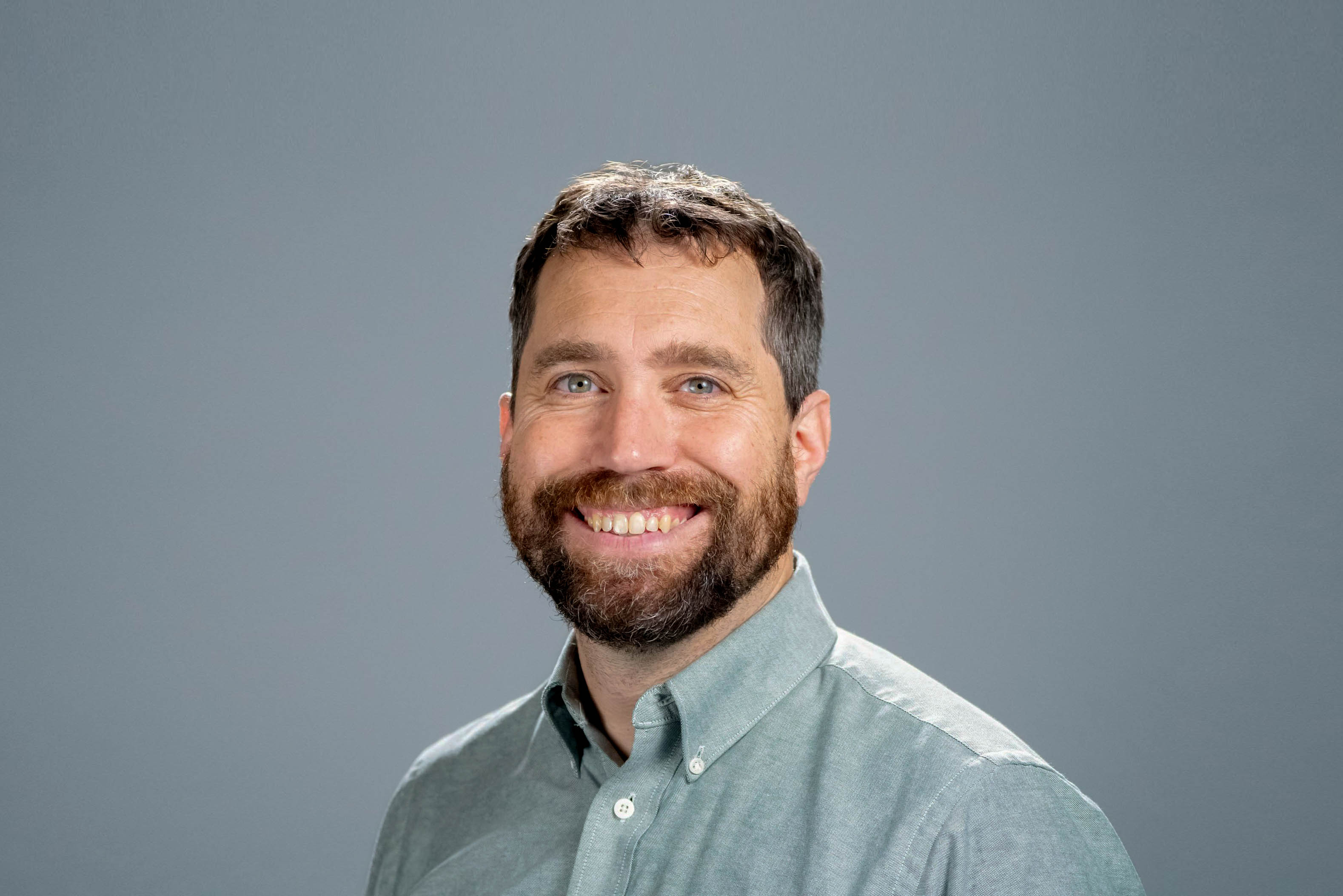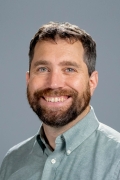

During the Spring 2025 semester:
Monday and Tuesday, 10-11am
648 Sutardja Dai Hall
Additional meetings available by request
Evan A. Variano is a Professor of Civil and Environmental Engineering at UC Berkeley. Variano’s research focuses on environmental fluid mechanics & the physics of fluid motion in the environment. His expertise includes a variety of phenomena on a variety of scales, from microscopic mixing to the coupled ocean-atmosphere system that transports heat and Carbon Dioxide around the globe. An understanding of fluid mechanics is crucial for an engineer whose goal is to restore or preserve a natural environment (e.g., wetlands, rivers, or the ocean) or design a system in which water or air flow must be controlled (e.g., ventilation, treatment, or turbomachinery).
Variano’s research explores cutting-edge experimental techniques to make measurements of fluid phenomena, with a particular emphasis on the phenomena of turbulence and solute transport. His measurements occur in the laboratory or in the field and are motivated by engineering problems for which existing models and approximation methods fall short of stakeholder needs.
Please see Variano's full list of Publications, Awards, and Teaching information.
Postdoc, Geochemistry, Columbia University, 2008
Ph.D., Civil and Environmental Engineering, Cornell University, 2007
M.S., Civil Engineering, Cornell University, 2005
B.S., Physics, Princeton University, 2000
Variano’s research focuses on the dynamics of transport and mixing in environmental flows, specifically exploring management approaches for wetlands that control the emission of greenhouse gases, sediments in water quality, and capture by wetlands or other hydrodynamic processes, and the science of how organisms are shaped by the flow in their habitat. The research techniques that he is currently developing include imaging flows with dense vegetation or sediment suspensions, flow-structure interaction for free-floating or loosely anchored structures, and measuring the flux of gases and aerosols at interfaces.
PROSPECTIVE GRADUATE STUDENTS:
The best way to get involved with Professor Variano’s research is to apply to the UC Berkeley graduate program in Civil and Environmental Engineering. You will likely have some questions about this process, which are best answered by our Graduate Admissions Advisor, In addition, there is a rotating group of faculty that serve as Admissions Directors and can help you through the process.
To arrange a meeting to talk about the engineering field with Professor Variano, please send him an email with the information discussed below. As formal as it sounds, if you use the item numbers below in your email, it will help Professor Variano know that the message is addressed to him directly.
- When do you plan on applying to our graduate program?
- What part of the research portfolio gets you excited?
- Please attach an unofficial transcript. Add a CV or Resume if you like.
PROSPECTIVE RESEARCHERS OF OTHER CATEGORIES
If you are hoping to get involved with Professor Variano’s research without being a graduate student (e.g., intern, visiting scientist, undergrad researcher), please begin by checking the strict deadlines for application. If you can meet those deadlines, then please send Professor Variano an email with all of the above information and a description of how you plan on funding your research experience (will you be a volunteer, or will some fellowship provide for your living expenses).
If there seems to be a fit, Professor Variano will respond to schedule a meeting time to discuss further. Please note that it can take up to a few weeks to get a response back. If you do not hear back from him, this indicates that there are no projects requiring your skill set at that time, but he will keep your name and interests on file.
Please see file
- UC Berkeley Presidential Chair Fellow
- Hellman Faculty Fellow
- ASCE Student Chapter award 2009: Most Involved Professor
- UC Berkeley Postdoctoral Mentor award 2018.
- UC Berkeley Excellence in Lab Safety Award 2018.
CE24 (Waves - Ideal, Real, and In-Between)
CE92 (Introduction to Civil and Environmental Engineering)
CE100 (Elementary Fluid Mechanics)
CE219 (Fluid Flow in Environmental Processes)
Principal Publications in Past Five Years |
Oehmke, T. and E.A. Variano, 2020 “A New Particle for Measuring Mass Transfer in Turbulence,” Experiments in Fluids, In press, doi.org/10.1007/s00348-020-03084-5. Bordoloi, A.D., Variano, E.A., and Verhille, G., 2020, “Lagrangian Time Scale of Passive Rotation for Mesoscale Particles in Turbulence,” Frontiers in Marine Science 7:473. doi.org/10.3389/fmars.2020.00473 Bordoloi, A.D., Lai, C., Clark, L., Carrillo, G., and Variano, E.A., 2020, “Turbulence statistics in a negatively buoyant multiphase plume,” Journal of Fluid Mechanics, 896, A16. doi.org/10.1017/jfm.2020.326 Allen, R. M., Lacy, J. R., Stacey, M. T., and Variano, E.A., 2019, “Seasonal, spring‐neap, and tidal variation in cohesive sediment transport parameters in estuarine shallows,” Journal of Geophysical Research: Oceans, 124, 7265–7284. doi.org/10.1029/2018JC014825 Byron, M.L., Yiheng Tao, Houghton, I.A., and Variano, E.A., 2019, “Slip velocity of large low-aspect-ratio cylinders in homogeneous isotropic turbulence,” International Journal of Multiphase Flow, 121, 103120. doi.org/10.1016/j.ijmultiphaseflow.2019.103120. Pujara, N., Oehmke, T. B., Bordoloi, A. D., and Variano, E. A., 2018, “Rotations of Large Inertial Cubes, Cuboids, Cones, and Cylinders in Turbulence,” Physical Review Fluids, 3(5). doi.org/10.1103/PhysRevFluids.3.054605 Foster-Martinez, M.R. and Variano, E.A., 2018, “Biosolids as a marsh restoration amendment,” Ecological Engineering, 117, 165–173. doi.org/10.1016/j.ecoleng.2018.02.012. Foster-Martinez, M.R., J.R. Lacy, M.C. Ferner, and Variano, E.A., 2018, “Wave attenuation across a tidal marsh in San Francisco Bay,” Coastal Engineering, 136, 26–40. doi.org/10.1016/j.coastaleng.2018.02.001. Poindexter, C. M., Baldocchi, D. D., Matthes, J. H., Knox, S. H., and Variano, E. A., 2016, “The Contribution of an Overlooked Transport Process to a Wetland’s Methane Emissions,” Geophysical Research Letters, 43(12), p. 2016GL068782. http://dx.doi.org/10.1002/2016GL068782 Lambert, R. A. , and E. A. Variano, 2016, "Collision of oil droplets with marine aggregates: Effect of droplet size," Journal of Geophysical Research: Oceans, special issue on Deepwater Horizon Oil Spill, 121, 3250–3260. http://dx.doi.org/10.1002/2015JC011562 Foster‐Martinez, M. R., and Variano, E. A., 2016, “Air‐water Gas Exchange by Waving Vegetation Stems,” Journal of Geophysical Research: Biogeosciences, 121(7), pp. 1916–1923. http://dx.doi.org/10.1002/2016JG003366
|
